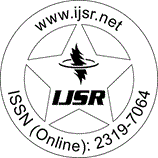Downloads: 5 | Views: 168 | Weekly Hits: ⮙3 | Monthly Hits: ⮙3
Research Paper | Surgery | India | Volume 13 Issue 12, December 2024 | Popularity: 5.7 / 10
A Comparative Study of Negative Pressure Wound Therapy with Conventional Dressing in Patients in Non-Healing Ulcer at Tertiary Care Centre
Dr. Priyanka Thakur, Dr. Sanjay Kumar Mishra, Dr. Atul Shishodia
Abstract: Introduction: Patients with chronic wounds is defined as wounds that do not heal in six weeks or do not shrink by 20?40% after receiving appropriate care for two to four weeks. As high as 25% of patients suffering from diabetes mellitus develop foot ulcer in their lifetime according to various studies. In such cases Negative Pressure Wound Therapy (NPWT) is a unique approach that has been demonstrated to stimulate the wound environment to promote rapid healing although the cost of such therapy can be deleterious and decrease number of patients who would go for such therapies. Thus, in this study cost effective methods have been used to create Negative pressure wound therapy and thereby the efficacy of NPWT against traditional dressing are compared in this study. Objectives: To assess how long NPWT takes to prepare the bed (healthy granulation) for split skin grafting in cases of chronic non-healing ulcers. To assess how long traditional dressing takes to prepare the bed (healthy granulation) for split skin transplantation in cases of chronic non-healing ulcers. To evaluate the relative efficacy of traditional dressing and NPWT for non-healing ulcers. Methods: 50 patients with chronic ulcers participated in this randomized controlled experiment. They were split into two groups, each with 25 participants: Group A (traditional dressing) and Group B (NPWT). The appearance of granulation tissue, wound contraction, and healing time were used to evaluate the effectiveness of the treatment. Result: Compared to the traditional dressing group, patients treated with NPWT had an earlier development of granulation tissue (p<0.05). 53.6% and 96.4% of NPWT patients exhibited granulation tissue at the end of one and two weeks, respectively, compared to 21.4% and 64.3% in the traditional group (p<0.01). The NPWT group's mean healing time was 7.33 days, which was considerably shorter than that of the conventional group (12.12 days; p<0.01). Conclusion: NPWT is a better treatment option for chronic ulcers since it showed notable advantages over traditional dressings in terms of earlier granulation tissue production and faster healing timeframes. To validate these results and examine NPWT's suitability for various wound types and patient demographics, more study with bigger sample sizes is necessary.
Keywords: diabetic ulcers, tertiary care, split skin grafting, granulation tissue, negative pressure wound therapy (NPWT), conventional dressing, wound healing, wound contraction, and wound management
Edition: Volume 13 Issue 12, December 2024
Pages: 579 - 584
DOI: https://www.doi.org/10.21275/MR241206175709
Please Disable the Pop-Up Blocker of Web Browser
Verification Code will appear in 2 Seconds ... Wait
